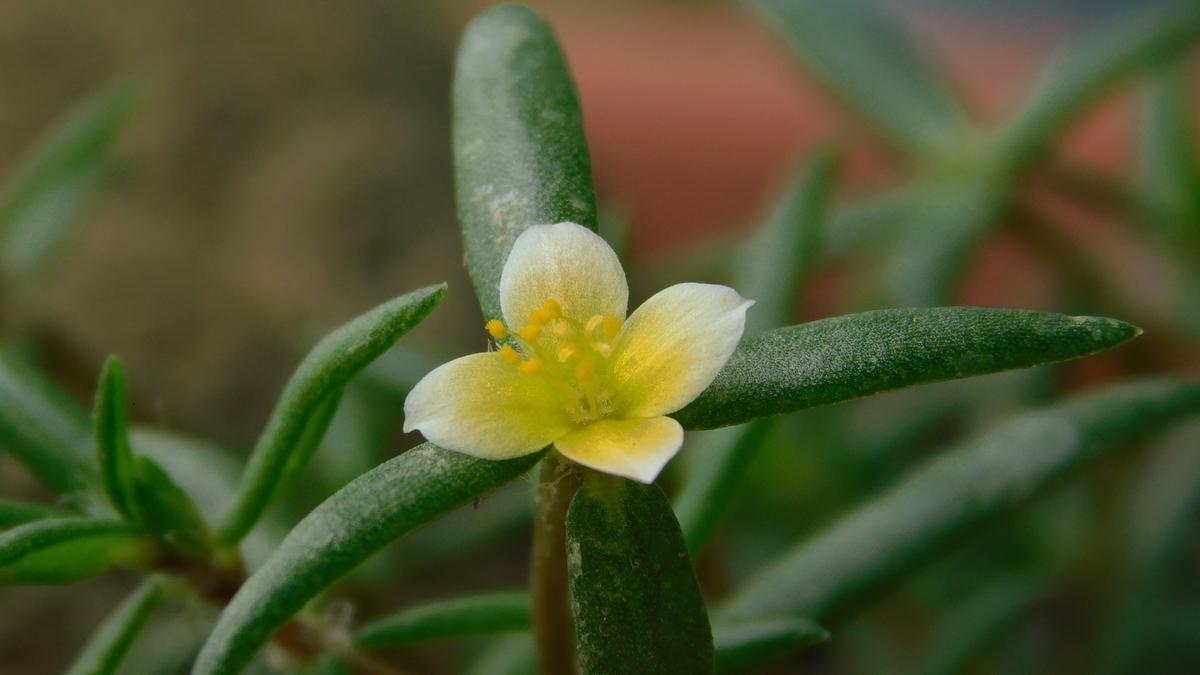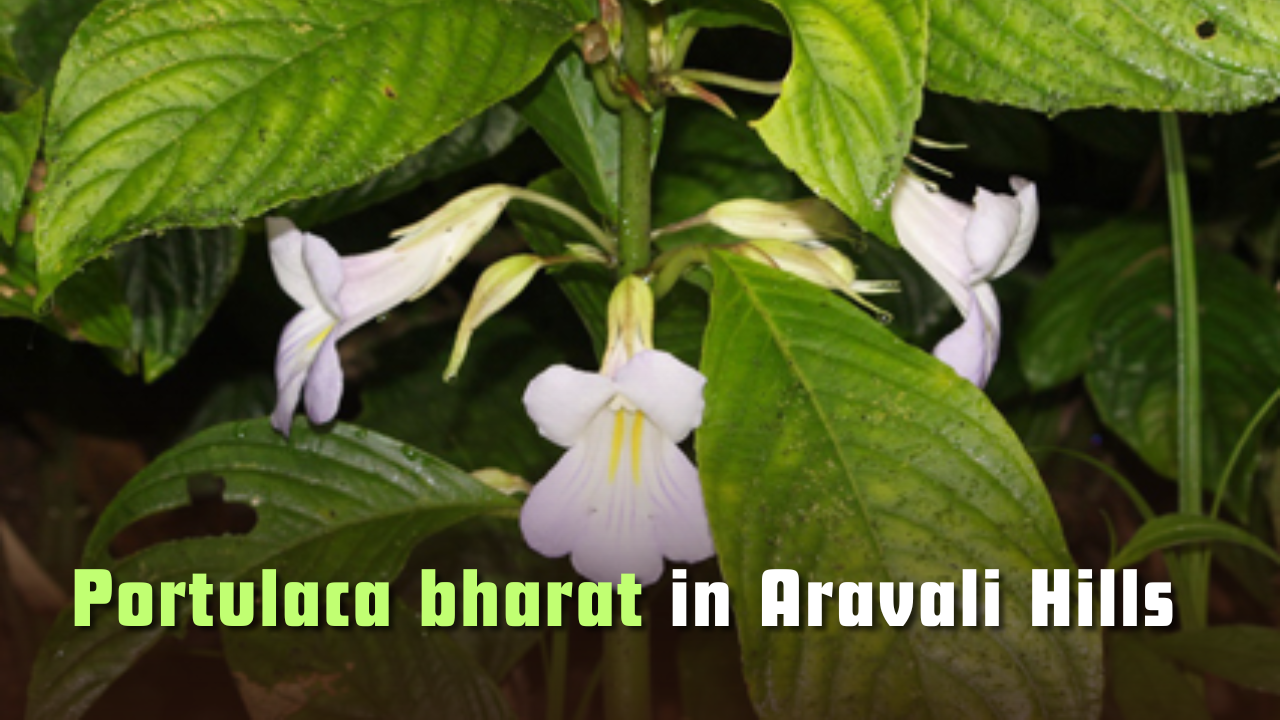Font size:
Print
Discovery of Portulaca bharat in Aravali Hills
New flowering plant species discovered in Aravali hills landscape near Jaipur
Context: A new species of flowering plant, Portulaca bharat, has been discovered in the rocky and semi-arid landscape of the Aravali Hills near Jaipur, Rajasthan.
More on News
- The plant was found growing from a rock crevice near the historic Galtaji temple, located on the outskirts of Jaipur.
- First spotted by Nishant Chauhan, researcher and committee member of Satpura Biodiversity Conservation Society (SBCS).

Taxonomy and Classification
- Portulaca bharat belongs to the genus Portulaca, which includes about 153 species globally, mostly found in tropical and subtropical regions.
- In India, 11 species of Portulaca are known, with four being endemic to the country.
- The species has been formally described in the international journal Phytotaxa, following detailed studies and comparisons with herbarium specimens from the Botanical Survey of India (BSI) and other institutions.
Morphological Characteristics of Portulaca bharat
- Leaves: Opposite and slightly concave
- Flowers: Pale yellow becoming creamish-white at the apex
- Filaments: Presence of glandular hairs on stamen filaments
- Roots: Thick and well-developed
- Displays morphological stability across different environments, observed under controlled conditions in Hamirpur (Himachal Pradesh) and Lucknow.
Conservation Status and Concerns
- Currently classified as “Data Deficient” under IUCN Red List guidelines.
- Only 10 individuals of the species were observed in the wild.
- The species is narrowly endemic to a single location in the Galtaji hills, making it highly vulnerable to habitat degradation and climate change.
- Researchers emphasises the need for enhanced field surveys, habitat protection, and ex situ conservation, especially in underexplored dry zones like the Aravalis.
Ecological and Scientific Significance
- The Aravali Range, one of the oldest geological formations on Earth, hosts a wealth of micro-endemic species and dry deciduous ecosystems.
- The discovery underscores the hidden biodiversity of the Aravalis and the urgency of its protection.
- Naming the species Portulaca bharat symbolises India’s rich and still-unfolding natural heritage.
- The new species opens new avenues for research in phytogeography, ecology, and evolutionary biology.
About Aravalli Range
- The Aravalli Range is located in northwestern India, stretching for 430 miles.
- Geographical Spread: From Delhi through Haryana, Rajasthan, to Gujarat.
- Oldest Fold Mountain Range in India. Formed during the Precambrian era, in an event called the Aravalli-Delhi Orogen.
- Originated when the Indian Plate and Eurasian Plate were separated by an ocean.
- The range is a southwest-northeast trending orogen.
- Merges two segments of the Indian craton: Aravalli Craton, Bundelkhand Craton.
- Highest Peak: Guru Shikhar (5,650 ft) on Mount Arbuda
- Rivers Originating from Aravallis:
-
- Luni River: Flows from Pushkar Valley to Rann of Kutch.
- Sahibi River: Originates near Manoharpur, flows through Haryana and Delhi, joins the Yamuna.
- Chambal River: Originates in Rajasthan, flows east into the Yamuna.
Subscribe to our Youtube Channel for more Valuable Content – TheStudyias
Download the App to Subscribe to our Courses – Thestudyias
The Source’s Authority and Ownership of the Article is Claimed By THE STUDY IAS BY MANIKANT SINGH


